- Home
- Stephen Baxter
Space Page 7
Space Read online
Page 7
We are crawling across a slag heap, Maura thought, trying to figure out what was made here. But are we being too anthropomorphic? Would a Neandertal conclude that we must be unintelligent because, searching our nuclear reactors, she could find no chippings from flint cores?
But what else can we do? How can we test for the unknowable?
The asteroid’s second lobe had all but ‘risen’ above the horizon now. It was a ball of rock, black and battered, that hung suspended over the land, as if in some Magritte painting. She could even see a broad band of crushed, flattened rock ahead, where one flying mountain rested against the other.
The second lobe was so close it seemed Maura could see every fold in its surface, every crater, even the grains of dust there. How remarkable, she thought.
The probe’s mode of travel had changed now, she noticed; the pitons were applying small sideways or braking tweaks to an accelerating motion towards the system’s centre of gravity, that contact zone. Gravity must be decreasing in strength the tug of the rock below her balanced by the equal mass of rock above, so that the net force was becoming more and more horizontal, and the probe was simply pulled across the surface.
Now the second lobe was so close, in this virtual diorama, it was over her head. Its crumpled inverted landscape formed a rocky roof. It was dark here, with the sun occluded, and the slices of starlight in the gap between the worlds were growing narrower.
Lamps lit up on the probe, and they played on the land beneath, the folded roof above. She longed to reach up and touch those inverted craters, as if a toy Moon had been hung over her head, a souvenir from some Aristotelian pocket universe.
‘… I think we have something,’ Xenia said quietly.
Maura looked down. Her field of view blurred as the interpolation routines struggled to keep up.
There was something on the ground before her. It looked like a blanket of foil, aluminium or silver, ragged-edged, laid over the dark regolith. Aside from a fringe a metre or two wide, it appeared to be buried in the loose dirt. Its crumpled edges glinted in the low sunlight.
It was obviously artificial.
Brind had next met Malenfant a few months later, at Kennedy Space Center.
Malenfant found KSC depressing; most of the launch gantries had been demolished or turned into rusting museum pieces. But the visitors’ centre was still open. The Shuttle exhibit – artefacts, photographs and virtuals – was contained within a small geodesic dome, yellowing with age.
And there, next to the dome, was Columbia, a genuine orbiter, the first to be flown in space. A handful of people were sheltering from the Florida sun in the shade of her wing; others were desultorily queuing on a ramp to get on board. Columbia’s main engines had been replaced by plastic mock-ups, and her landing gear was fixed in concrete. Columbia was forever trapped on Earth, he thought.
He found Brind standing before the astronaut memorial. This was a big slab of polished granite, with names of dead astronauts etched into it. It rotated to follow the sun, so that the names glowed bright against a backdrop of sky.
‘At least it’s sunny,’ he said. ‘Damn thing doesn’t work when it’s cloudy.’
‘No.’ The granite surface, towering over them, was mostly empty. The space program had shut down leaving plenty of room for more names.
Sally Brind was short, thin, intense, with spiky, prematurely grey hair; she was no older than forty. She affected small round black glasses, which looked like turn-of-the-century antiques. She seemed bright, alert, engaged. Interested, he thought, encouraged.
He smiled at her. ‘You got any answers for me?’
She handed him a folder; he leafed through it.
‘Actually it was a lot of fun, Malenfant.’
‘I’ll bet. Gave you something real to do.’
‘For the first time in too long. First we looked at a continuous nuclear fusion drive. Specific impulse in the millions of seconds. But we can’t sustain a fusion reaction for long enough. Not even the Japanese have managed that yet.’
‘All right. What else?’
‘Maybe photon propulsion. The speed of light – the ultimate exhaust velocity, right? But the power plant weight and energy you’d need to get a practical thrust are staggering. Next we thought about a Bussard ramjet. But it’s beyond us. You’re looking at an electromagnetic scoop that would have to be a hundred kilometres across –’
‘Cut to the chase, Sally,’ he said gently.
She paused for effect, like a kid doing a magic trick. Then she said: ‘Nuclear pulse propulsion. We think that’s the answer, Malenfant. A series of micro-explosions – fusion of deuterium and helium-3 probably – set off behind a pusher plate.’
He nodded. ‘I’ve heard of this. Project Orion, back in the 1960s. Like putting a firecracker under a tin can.’
She shaded her eyes from the sun’s glare. ‘Well, they proved the concept, back then. The Air Force actually ran a couple of test flights, in 1959 and 1960, with conventional explosives. And it’s got the great advantage that we could put it together quickly.’
‘Let’s do it.’
‘Of course we’d need access to helium-3.’
‘NASDA will supply that. I have some contacts … Maybe we should look at assembly in lunar orbit. How are you going to keep me alive?’
She smiled. ‘The ISS is still up there. I figure we can cannibalize a module for you. Have you decided what you want to call your ship?’
‘The Commodore Perry,’ he said without hesitation.
‘Uh huh. Who –?’
‘Perry was the guy who, in 1853, took the US Navy to Japan and demanded they open up to international trade. Appropriate given the nature of my mission, don’t you think?’
‘It’s your ship.’ She glanced about. ‘Anyhow, what are you doing out here?’
He nodded at the Shuttle exhibit. ‘They’ve got my old EMU in there, on display. I’m negotiating to get it back.’
‘EMU?’
‘My EVA Mobility Unit. My old pressure suit.’ He patted his gut, which was trim. ‘I figure I can still get inside it. I can’t live with those modern Jap designs full of pond scum. And I want a manoeuvring unit …’
She was looking at him oddly, as if still unable to believe he was serious.
‘Not ours,’ whispered Xenia. ‘Nothing to do with Bruno.’
Suddenly Maura found it difficult to breathe. This is it, she thought. This unprepossessing blanket: the first indubitably alien artefact, here in our solar system. Who put the blanket there? What was its purpose? Why was it so crudely buried?
A robot arm reached forward from the probe, laden with sensors and a sample-grabbing claw. She wished that was her hand, that she could reach out too, and stroke that shining, unfamiliar material.
But the claw was driven by science, not curiosity; it passed over the blanket itself and dug a shallow groove into the regolith that lay over it, sampling the material.
Within a few minutes the results of the probe’s analysis were coming in, and she could hear the speculation begin in Bootstrap’s back rooms.
‘These are fines, and they are ilmenite-rich. About forty per cent, compared to twenty per cent in the raw regolith.’ ‘And the agglutinate has been crushed.’ ‘It’s as if it has been beneficiated. It’s just what we’d do.’ ‘Not like this. So energy-intensive …’
She understood some of this. Ilmenite was a mineral – a compound of iron, titanium, and oxygen – that was common in long-exposed regolith on airless bodies like the Moon and the asteroids. Its importance was that it was a key source of volatiles: light and exotic compounds implanted there over billions of years by the solar wind, the thin, endless stream of particles that fled from the sun. But ilmenite was difficult to concentrate, extract and process; the best mining techniques the lunar Japanese had thought up were energy-intensive and relied on a lot of heavy-duty, unreliable equipment.
‘I knew it!’ somebody cried. ‘There’s no helium-3 in the processed stuff!
None at all!’ ‘None to the limits of the sensors, you mean.’ ‘Sure, but –’ ‘You mean they’re processing the asteroids for helium-3? Is that all?’
Maura felt oddly disappointed. If the Gaijin were after helium-3, did that mean they used fusion processes similar to – perhaps no more advanced than – those already known to humans? And if so, they can’t be so smart – can they?
In her ears, the speculation raged on.
‘… I mean, how dumb can these guys be? Helium-3 is scarce in asteroid regolith because you’re so far from the sun, which implants it. The Moon is a lot richer. If they came in a couple of astronomical units –’ ‘They could just buy all they want from the Japanese.’
Laughter.
‘But maybe they can’t come in any closer. Maybe they need, I don’t know, the cold and the dark.’ ‘Maybe they are scared of us. You thought about that?’
‘They aren’t so dumb. You see any rock-crushers and solar furnaces here? That’s what we’d have to use to get as efficient an extraction process. Think about that blanket, man. It has to be nanotech.’
She understood what that meant too: there was no brute force here, no great ugly machines for grinding and crushing and baking as humans might have deployed, nothing but a simple and subtle reworking of the regolith at a molecular, or even atomic, level.
‘That blanket must be digging its way into the asteroid grain by grain, picking out the ilmenite and bleeding the helium-3. Incredible.’ ‘Hey, you’re right. Maybe it’s extending itself as it goes. The ragged edge –’ ‘It might eat its way right through that damn asteroid.’ ‘Or else wrap the whole thing up like a Thanksgiving turkey …’ ‘We got to get a sample.’ ‘Bruno knows that …’
Nanotechnology: something, at last, beyond the human. Something other. She shivered.
But now there was something new, at the corner of her vision, something that shouldered its way over the horizon. It was glittering, very bright against the dark sky. Huge.
It was as if a second sun had risen above the grimy shoulder of Ellis. But this was no sun.
The prattling, remote voices fell silent.
It was perhaps a kilometre long, and wrought in silver. There was a bulky main section, a smoothly curved cylinder, with a mess of silvery ropes trailing behind. Dodecahedral forms – perhaps two or three metres across, silvered and anonymous – clung to the tentacles. There were hundreds of them, Maura saw. Thousands. Like insects, beetles.
A ship. Suddenly she remembered why they were here: not to inspect samples of regolith, not to pick at cute nanotechnological toys. They were here to make contact.
And this was it. She imagined history’s view swivelling, legions of scholars in the halls of an unknown future inspecting this key moment in human destiny.
She found she had to force herself to take a breath.
The ship was immense, panning out of her view, cutting the sky in half. Its lower rim brushed the asteroid’s surface, and plasma sparkled.
The Bootstrap voices in her ear buzzed. ‘My God, it’s beautiful.’ ‘It looks like a flower.’ ‘It must be a Bussard ramjet. That’s an electromagnetic scoop –’ ‘It’s so beautiful, a flower-ship …’ ‘Yeah. But you couldn’t travel between the stars in a piece of junk like that!’
Now those shining beetles drifted away from the ropes. They skimmed across space towards the Bruno. Were these dodecahedra individual Gaijin? What was their intention?
Silver ropes descended like a net across her point of view now, tangling up the Bruno, until the view was criss-crossed with silver threads. The threads seemed to tauten. To cries of alarm from the insect voices at Bootstrap’s mission control, the probe was hauled backwards, and its gentle grip on the asteroid was loosened, tethers and pitons flying free in a slow flurry of sparkling dust.
The brief glimpse of the Gaijin ship was lost. Stars and diamond-sharp sun wheeled, occluded by dust specks and silver ropes.
Maura felt her heart beat fast, as if she was herself in danger. She longed for the Bruno to burst free of its restraints and flee from these grasping Gaijin, running all the way back to Earth. But that was impossible. In fact, she knew, the Bruno was designed to be captured, even dissected; it contained cultural artefacts, samples of technology, attempts to communicate based on simple diagrams and prime number codes. Hello. We are your new neighbours. Come over for a drink, let’s get to know each other …
But this did not feel like a welcoming embrace, a contact of equals. It felt like capture. Maura made a stern effort to sit still, not to struggle against silver ropes that were hundreds of millions of kilometres away.
Chapter 5
SADDLE POINT
The Commodore Perry was assembled in lunar orbit.
The fuel pellets were constructed at Edo, on the Moon, by Nishizaki Heavy Industries, and hauled up to orbit by a fleet of tugs. Major components like the pusher plate and the fuel magazine frame were manufactured on Earth, by Boeing. The components were lifted off Earth by European and Japanese boosters, Ariane 12s and H-VIIIs.
After decades in orbit the old International Space Station module had a scuffed, lived-in look. When the salvage crew had moved in the air had been foul and the walls covered with a scummy algae, and it had taken a lot of renovation to render it habitable again.
The various components of the Perry were plastered with sponsors’ logos. That didn’t matter a damn to Malenfant; he knew most of his paintwork would be scoured off in a few months anyhow. But he made sure that the Stars and Stripes was large, and visible.
Malenfant prepared himself for the trip.
In her cramped office at JSC, Brind challenged him, one last time. She felt, obscurely, that it was her duty.
‘Malenfant, this is ridiculous. We know a lot more about the Gaijin now. We have the results returned by the probe –’
‘The Bruno.’
‘Yes. The glimpses of the beautiful flower-ship. Fascinating.’
‘But that was two years ago,’ Malenfant growled. ‘Two years! The Gaijin still won’t respond to our signals. And we aren’t even going back. The government shut down Frank Paulis’s operation after that one shot. National security, international protocols …’
She shrugged.
‘Exactly,’ he snapped. ‘You shrug. People have lost interest. We’ve got the attention span of mayflies. Just because the Gaijin haven’t come storming into the inner system in flying saucers –’
‘Don’t you think that’s a good point? The Gaijin aren’t doing us any harm. We’re over the shock of learning that we aren’t alone. What’s the big deal? We can deal with them in the future, when we’re ready. When they are ready.’
‘No. Colonizing the solar system is going to take centuries, minimum. The Gaijin are playing a long game. And we have to get into the game before it’s too late. Before we’re cut out, forever.’
‘What do you think their ultimate intentions are?’
‘I don’t know. Maybe they want to dismantle the rocky planets. Maybe take apart the sun. What would you do?’
Oddly, in her mundane, cluttered office, her security badge dangling at her neck, she found herself shivering.
The Perry looped through an elliptical two-hour orbit around the Moon. On the lunar surface, the lights of the spreading Japanese colonies and helium-3 mines glittered.
The completed ship was a stack of components fifty metres long. At its base was a massive, reinforced pusher plate, mounted on a shock-absorbing mechanism of springs and crushable aluminium posts. The main body of the craft was a cluster of fuel magazines. Big superconducting hoops encircled the whole stack.
Now pellets of helium-3 and deuterium were fired out of the back of the craft, behind the pusher plate. They formed a target the size of a full stop. A bank of carbon dioxide lasers fired converging beams at the target.
There was a fusion pulse, lasting two hundred and fifty nanoseconds. And then another, and another.
Three hundred micro-explosions each second
hurled energy against the pusher plate. Slowly, ponderously, the craft was driven forward.
From Earth, the new Moon was made brilliant by fusion fire.
The acceleration of the craft was low, just a few per cent of G. But it was able to sustain that thrust for a long time – years, in fact – and once the Perry had escaped lunar orbit, its velocity mounted inexorably.
Within, Reid Malenfant settled down to the routines of long-duration spaceflight.
His hab module was a shoebox, big enough for him to stand up straight. He drenched it with light from metal halide lamps, hot white light like sunlight, to keep the blues away. The walls were racks which held recovery units, designed for easy replacement. There were wires and cables and ducts, running along the corners of the hab module and across the walls. A robot spider called Charlotte ran along the wires, cleaning and sucking dust out of the air. Despite his best efforts, the whole place was soon messy and cluttered, like an overused utility room. Gear was scattered everywhere, stuck to the floor and walls and ceiling with straps and Velcro. If he brushed against a wall he could cause an eruption of gear, of pens and softscreens and clipboards and data discs and equipment components, and food cans and toothpaste and socks.
Much of the key equipment was of Russian design – the recycling systems, for instance. He had big generators called Elektrons which could produce oxygen from water distilled from his urine. Drinking water was recovered from humidity in the air. There was a system of scrubbers called Vozdukh that removed carbon dioxide from the air. He had a backup oxygen generator system based on the use of ‘candles’, big cylinders containing a chemical called lithium perchlorate which, when heated, gave off oxygen. He had emergency oxygen masks that worked on the same principle. And so on.
It was all crude and clunky, but – unlike the fancier systems American engineers had developed for the Space Station – it had been proven, over decades, actually to work in space, and to be capable of being repaired when it broke down. Still, Malenfant had brought along two of most things, and an extensive tool kit.

 The Martian in the Wood
The Martian in the Wood THE H-BOMB GIRL
THE H-BOMB GIRL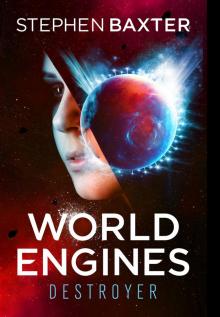 World Engine
World Engine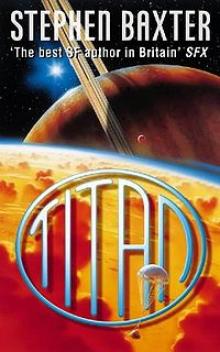 Titan n-2
Titan n-2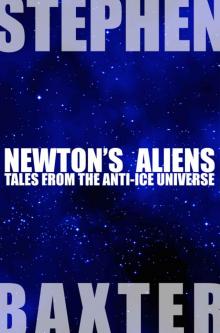 Newton's Aliens: Tales From the Anti-Ice Universe
Newton's Aliens: Tales From the Anti-Ice Universe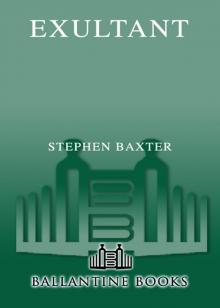 Exultant
Exultant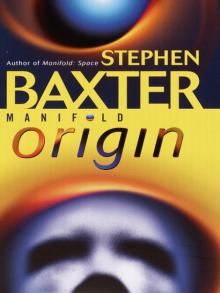 Manifold: Origin
Manifold: Origin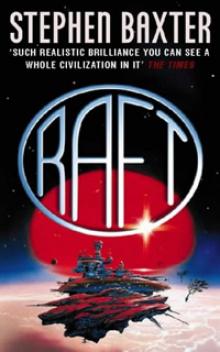 Raft xs-1
Raft xs-1 Bronze Summer n-2
Bronze Summer n-2 Transcendent
Transcendent Stone Spring
Stone Spring Coalescent
Coalescent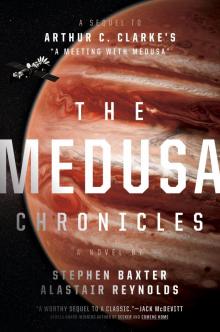 The Medusa Chronicles
The Medusa Chronicles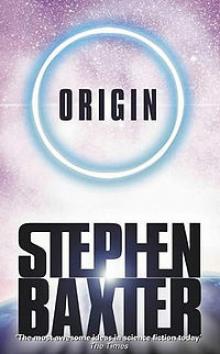 Origin m-3
Origin m-3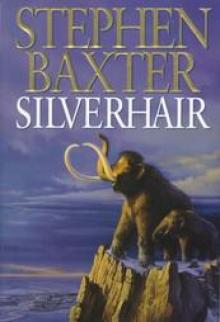 Silverhair tm-1
Silverhair tm-1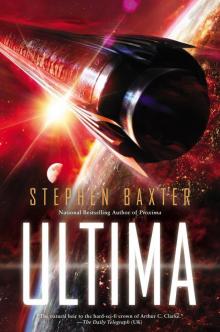 Ultima
Ultima Voyage n-1
Voyage n-1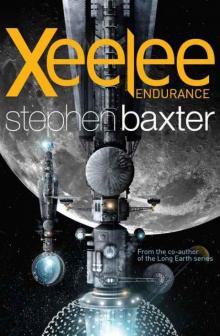 Xeelee: Endurance
Xeelee: Endurance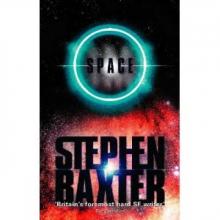 Space m-2
Space m-2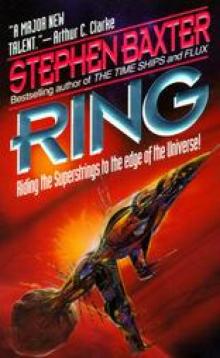 Ring xs-4
Ring xs-4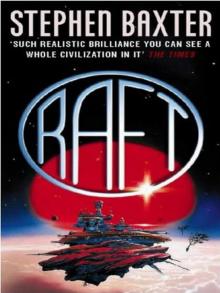 Raft
Raft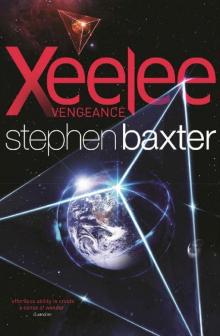 Xeelee: Vengeance
Xeelee: Vengeance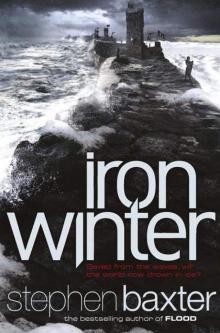 Iron Winter n-3
Iron Winter n-3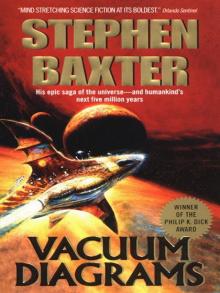 Vacuum Diagrams
Vacuum Diagrams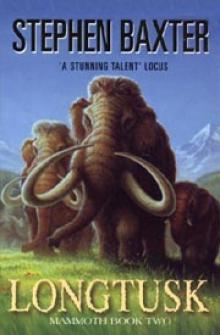 Longtusk tm-2
Longtusk tm-2 Proxima
Proxima Evolution
Evolution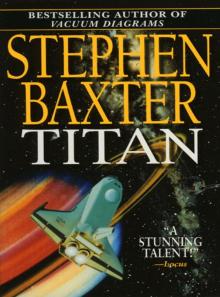 Titan
Titan Last and First Contacts (Imaginings)
Last and First Contacts (Imaginings) Emperor
Emperor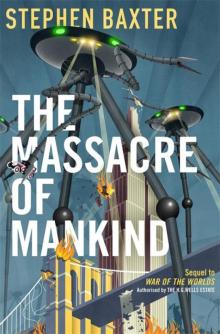 The Massacre of Mankind
The Massacre of Mankind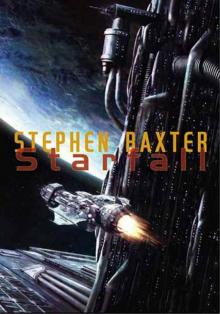 Starfall
Starfall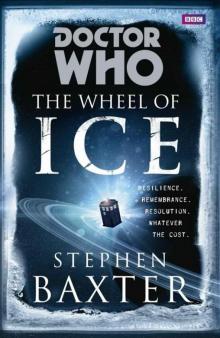 Doctor Who - The Wheel of Ice
Doctor Who - The Wheel of Ice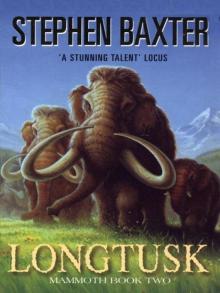 Longtusk
Longtusk Silverhair
Silverhair Conqueror tt-2
Conqueror tt-2 Flood
Flood Flood f-1
Flood f-1 Emperor tt-1
Emperor tt-1 Moonseed
Moonseed Conqueror
Conqueror Timelike Infinity xs-2
Timelike Infinity xs-2 The Ghost Pit
The Ghost Pit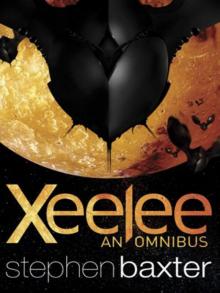 Xeelee: An Omnibus: Raft, Timelike Infinity, Flux, Ring
Xeelee: An Omnibus: Raft, Timelike Infinity, Flux, Ring Weaver tt-4
Weaver tt-4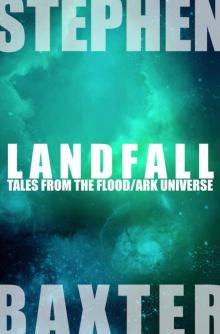 Landfall: Tales From the Flood/Ark Universe
Landfall: Tales From the Flood/Ark Universe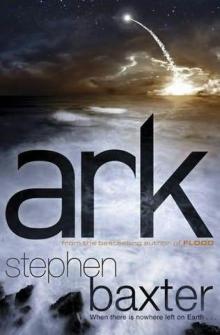 Ark
Ark Emperor: Time’s Tapestry Book One
Emperor: Time’s Tapestry Book One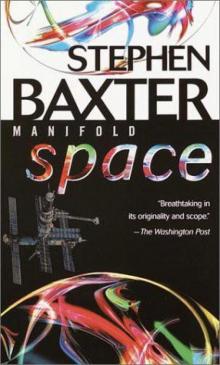 Space
Space Icebones
Icebones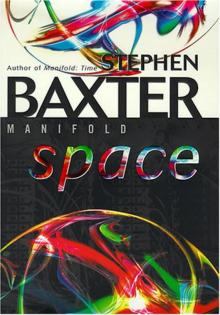 Manifold: Space
Manifold: Space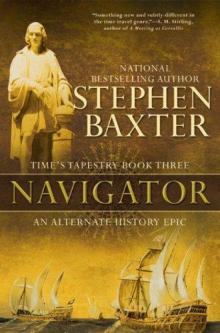 Navigator
Navigator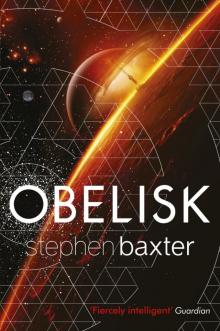 Obelisk
Obelisk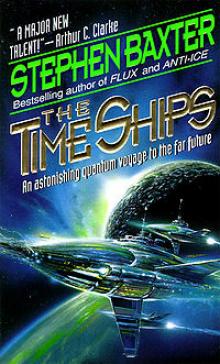 The Time Ships
The Time Ships Bronze Summer
Bronze Summer Resplendent
Resplendent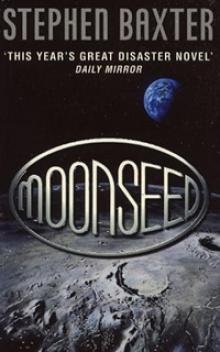 Moonseed n-3
Moonseed n-3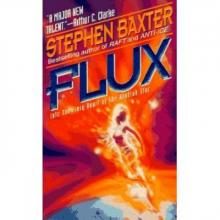 Flux xs-3
Flux xs-3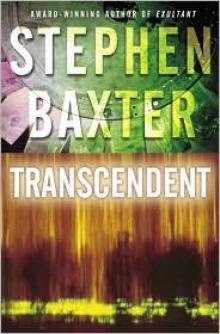 Transcendent dc-3
Transcendent dc-3 Icebones tm-3
Icebones tm-3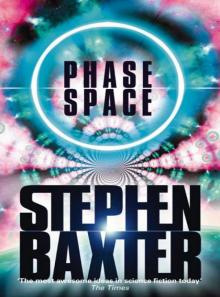 Phase Space
Phase Space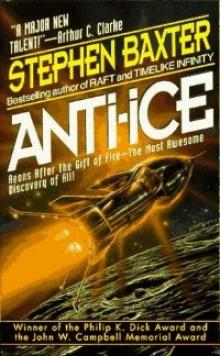 Anti-Ice
Anti-Ice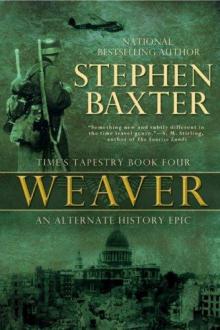 Weaver
Weaver Voyage
Voyage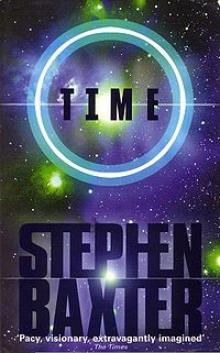 Time m-1
Time m-1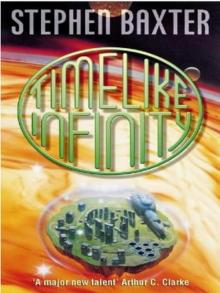 Timelike Infinity
Timelike Infinity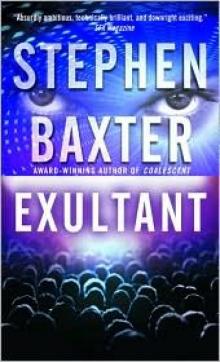 Exultant dc-2
Exultant dc-2 Coalescent dc-1
Coalescent dc-1 Navigator tt-3
Navigator tt-3